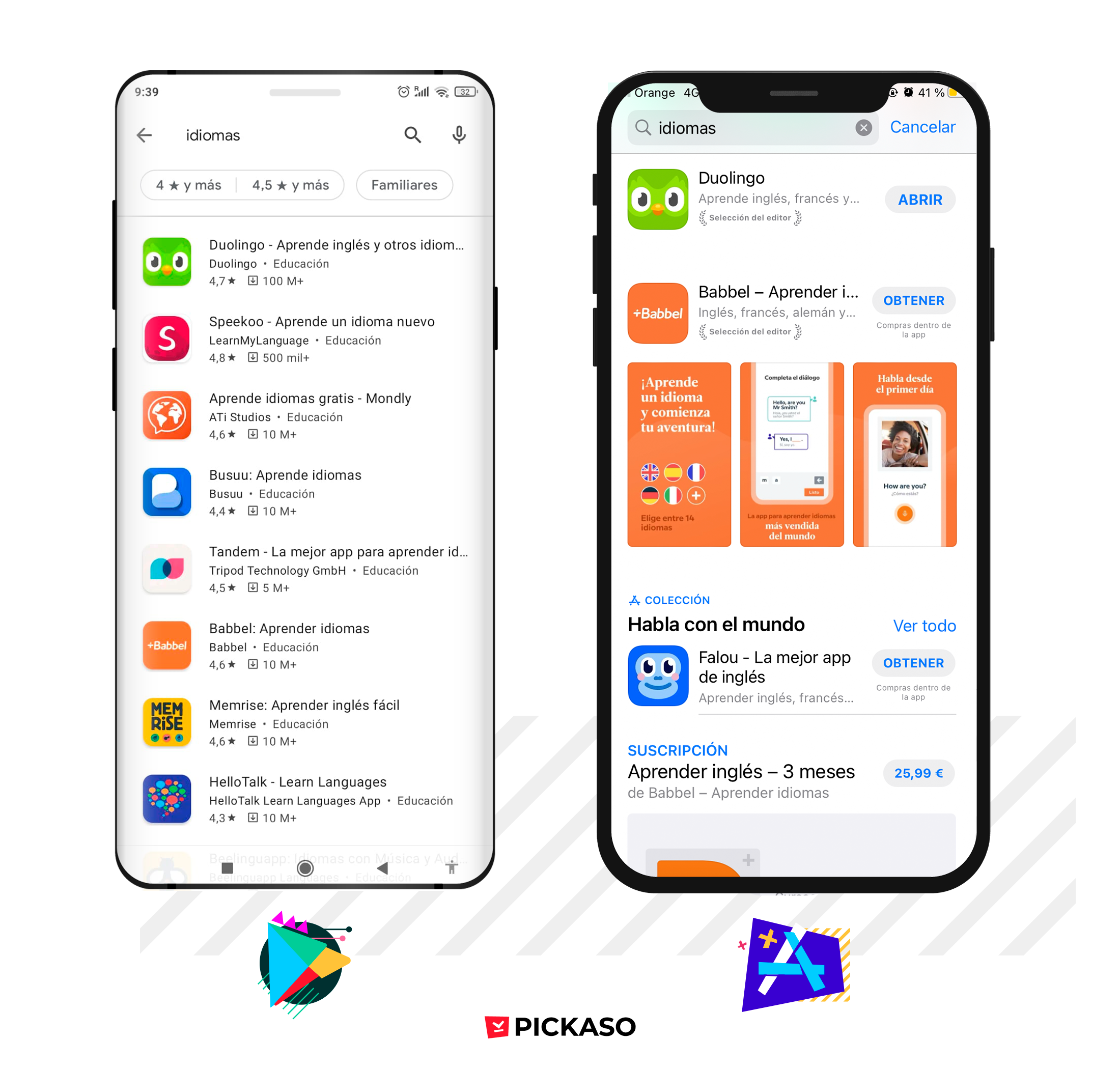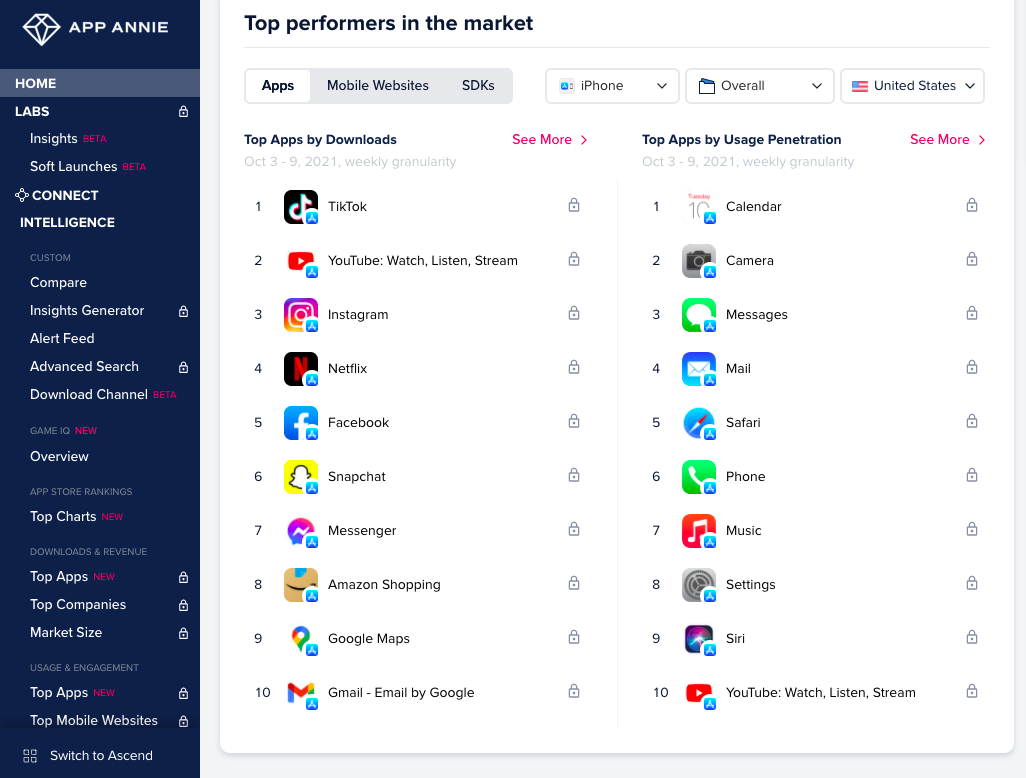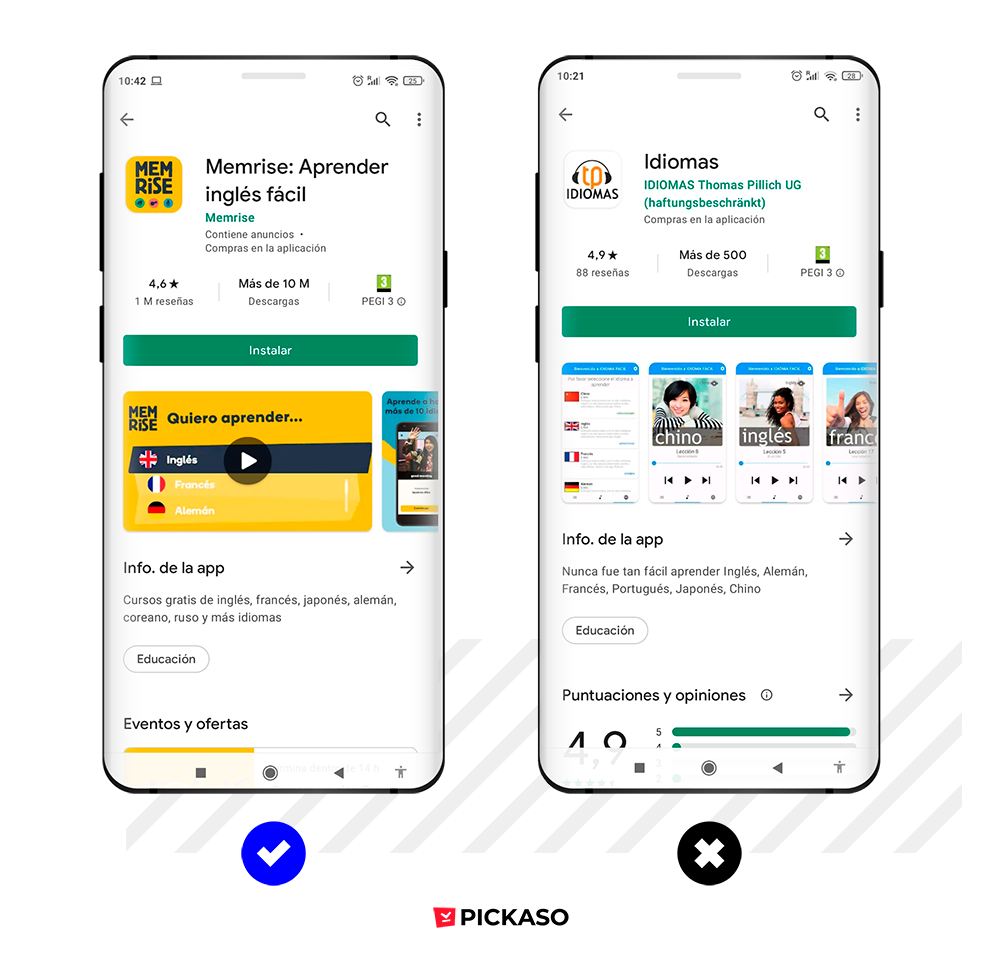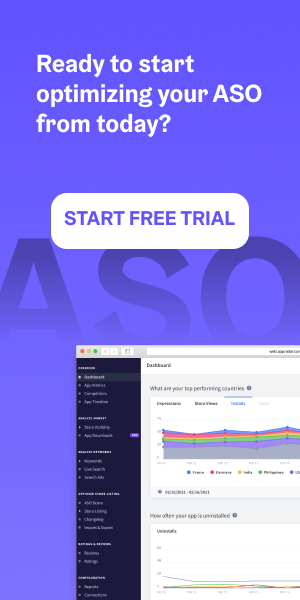As you know, any app with a good ASO strategy always comes from a good benchmark, not only to have a general overview of the market but also to discover the growth potential and how to gain visibility on the different mobile apps and games stores. And to do so, nothing better than to have a thorough look at the competency.
To do so, we will tell you in this post all you need to know to do a relevant selection of competitors for your app and what you need to study about them to know if they lead the way in terms of ASO or if they don’t.
Table of Contents
What does the ASO competitors’ selection depend on?
Before starting the analysis, it is important to take into account some factors that will determine the competitors you choose for your benchmark. This step is crucial as if you don’t think it through, the study won’t be valuable and that’s not what you want, right?
Before launching and publishing on the stores, you need to define an ASO strategy to get search and browse visibility, and to do so, studying the competition is fundamental. Now, you might be wondering, what do you need to take into account to choose your competitors?
1. Service or product type
The first obvious criteria to take into account is your main value proposition and you need to know what you are offering the users. Make sure you have it all clear before going through the next steps.
Let’s imagine you developed an app to learn languages and you think about launching it in a few months. How many languages do you offer? Are there payments within the app? Or is it a subscription model? The better you define your product, the easier it will be to recognize your direct competitors.
2. Apple App Store / Google Play Store
You need to take into account that competitors may vary according to the store where you decide to launch your app. An app can be available on Google Play, on App Store or on both stores at the same time, which is why you must know exactly in which stores your competition is available.
3. Market
Your competition will also be different depending on the countries where your app is available. It doesn’t make much sense choosing an app as a competitor if it’s only available in the US and yours is only available in Spain, as they do not compete for downloads.
Now, this doesn’t mean that you can’t take as a reference how your vertical works in other countries. It’s always a good thing to know what is worked on in other markets to understand how they manage keywords, visuals designs and other ASO aspects.
4. Startup vs. big companies
One of the most common mistakes in the competitors’ selection process is not taking into account your app’s scope compared to other apps of the same sector, especially if we speak about startups. For example, if you just published an app to learn languages, the best thing to do will be to focus on apps that are at the same level instead of choosing apps like Duolingo, much bigger and compared to which it will be hard to measure the impact of your ASO strategy. It’s a good thing to be optimistic, but you also need to be realistic.
If your app was already published a while ago and you earned visibility in your category, it’s different. When you reach that point, you can do another competitors’ selection with which it makes sense competing, always keeping in mind your possibilities.
Now you’re ready to start choosing your competitors, let’s start.
How to choose ASO competitors step by step
Step 1. Main keywords research
Start by choosing between 5 and 10 main keywords that you believe define your product’s business. Take into account that users’ search behaviour on the app stores is not the same as for web – the keywords are usually more short / mid tail than long-tail (for example, “sports bet” vs “top 10 sports bet apps”).
Once you have them, search them on Google Play, on the App Store or on both of them (according to your app’s scope) and identify the first competitors for each keyword you searched.

Another method can be identifying possible competitors in the category you want to rank in on the stores. There are many options on the market to do so, and if you don’t have one in mind you can always use App Annie: create a free account and get insights in the Top Charts section per category and per country.

Step 2. Competitor ASO analysis
If you got there, you must already have some apps in the radar that could be interesting as competitors. Now this is when you start filtering.
Enter the listing of all the competitors. What you need to take into account now is if the on-metadata textual fields are optimized in terms of keywords, mainly the Title and the Short Description (on Google Play, on the App Store the equivalents are the App Name and the Subtitle). See if they use relevant keywords in these fields, and if they are close to the maximum number of characters in each of them – if they don’t, they most likely did not take into account ASO or they are giving a lot of importance to the brand.
And if you have access to an ASO tool such as App Radar, it’s even better, as you can monitor the keywords on these fields and see their search traffic. It will not only confirm if your competitors worked on their listing but also help you to identify new keywords for which your app can rank. Two in one!
To make sure it’s all clear, let’s see two real examples of apps published on Google Play.
As a good example, you can see the languages app Memrise on the left. You can see that its title includes keywords such as “aprender” (learning), “inglés” (english) y “fácil” (easy), that are also combinable among them and enable the app to rank for keywords combinations like “aprender inglés” (learning english) or “inglés fácil” (easy english). The short description was also optimized, with keywords such as “cursos” (courses), “gratis” (free), “inglés” (english), “francés” (french) o “japonés” (japonese). Also, both fields make the most of the available characters to include all the possible keywords.
Now let’s see the other app: Idiomas has room for improvement in terms of ASO as it does not make the most out of the available characters of the title to include more keywords. The short description is better optimized, even if it could also be improved by changing the 17 characters “nunca fue tan” (it never was so [easy]) for keywords with organic search traffic.

Step 3. Downloads and ratings
Once chosen the competitors that work in your category and have a good ASO optimization, the last step (and not the least) is to have a look at their downloads and their growth, their average rating, their accumulated rating volume, their reviews (to see the strengths and weaknesses mentioned by the users), the app weight and the update frequency.
Before we mentioned that it was important to take into account your app’s capacity to compete against big players of the market. This is where your will be able to make sure about this, having a look at the total downloads and the accumulated ratings of the potential competitors. The store listing on Google Play and the App Store include an approximation of these metrics, which enables you to have an idea of which competitors are the best fit. However, monitoring these KPIs thanks to an ASO / App Marketing Intelligence tool is the best way to do so.
One issue with the stores approximations is that Google Play offers an only listing for each app, sharing global accumulated downloads and ratings data, while the App Store segments this data and shares it per country, and only the ratings are available. This data can provide you with an idea of the size and strength of your competitors, but to have more accurate data, the best way is to use an ASO / App Marketing Intelligence tool which are usually paid tools (keep in mind that these are always data estimates, as the exact download data can only be seen in the developer’s console of the app).
ASO Competitors – Conclusions
You have now defined your competitors list, from which you will be able to create your own ASO strategy.
Your next step will be to work on a keyword research – have a look at our post about how to do a keyword research in 2022 to discover all you need to know about it and learn how to do it step by step with premium tools.


